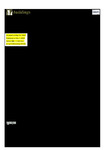Punching Shear Capacity of Recycled Aggregate Concrete Slabs
| dc.contributor.author | Leelatanon, S | |
| dc.contributor.author | Imjai, T | |
| dc.contributor.author | Setkit, M | |
| dc.contributor.author | Garcia, R | |
| dc.contributor.author | Kim, B | |
| dc.date.accessioned | 2022-11-02T12:45:49Z | |
| dc.date.available | 2022-11-02T12:45:49Z | |
| dc.date.issued | 2022-10-01 | |
| dc.identifier.issn | 2075-5309 | |
| dc.identifier.issn | 2075-5309 | |
| dc.identifier.other | 1584 | |
| dc.identifier.uri | http://hdl.handle.net/10026.1/19826 | |
| dc.description.abstract |
<jats:p>This article investigates the punching shear behavior of recycled aggregate concrete (RAC) two-way slabs. Ten 1500 mm × 1500 mm × 100 mm slabs were tested monotonically. Eight slabs were cast with RAC, whereas two control slabs were cast with natural aggregate concrete (NAC). The RAC incorporated coarse recycled concrete aggregate (RCA) at replacement levels of 25%, 50%, 75% and 100%. Two flexural reinforcement ratios (0.8% and 1.5%) were examined. The results show that the normalized punching shear strength of 100% RAC slabs decreased by 6.5% and 9% compared to NAC slabs for ρ = 1.5% and ρ = 0.8%, respectively. Doubling the amount of flexural reinforcement can increase the punching shear capacity of 100% RAC slabs by up to 45%. A punching shear database of 44 RAC slabs from literature and the 8 RAC slabs presented in this study revealed that the punching shear strength of RAC slabs predicted by ACI 318 was conservative, except for slabs with low reinforcement ratios (<0.6%). The punching shear strength predicted by Eurocode 2 gave more conservative results for all levels of RCA replacement and all flexural reinforcement ratios. A yield-line analysis also showed that the failure mode of the RAC slabs was controlled by punching shear.</jats:p> | |
| dc.format.extent | 1584-1584 | |
| dc.language | en | |
| dc.language.iso | en | |
| dc.publisher | MDPI AG | |
| dc.subject | recycled aggregate concrete | |
| dc.subject | punching shear | |
| dc.subject | two-way slabs | |
| dc.subject | slab-column connection | |
| dc.subject | flexural reinforcement ratios | |
| dc.subject | yield-line analysis | |
| dc.title | Punching Shear Capacity of Recycled Aggregate Concrete Slabs | |
| dc.type | journal-article | |
| dc.type | Article | |
| plymouth.author-url | https://www.webofscience.com/api/gateway?GWVersion=2&SrcApp=PARTNER_APP&SrcAuth=LinksAMR&KeyUT=WOS:000874249400001&DestLinkType=FullRecord&DestApp=ALL_WOS&UsrCustomerID=11bb513d99f797142bcfeffcc58ea008 | |
| plymouth.issue | 10 | |
| plymouth.volume | 12 | |
| plymouth.publication-status | Published online | |
| plymouth.journal | Buildings | |
| dc.identifier.doi | 10.3390/buildings12101584 | |
| plymouth.organisational-group | /Plymouth | |
| plymouth.organisational-group | /Plymouth/Faculty of Science and Engineering | |
| plymouth.organisational-group | /Plymouth/Faculty of Science and Engineering/School of Engineering, Computing and Mathematics | |
| plymouth.organisational-group | /Plymouth/REF 2021 Researchers by UoA | |
| plymouth.organisational-group | /Plymouth/REF 2021 Researchers by UoA/UoA12 Engineering | |
| plymouth.organisational-group | /Plymouth/Users by role | |
| plymouth.organisational-group | /Plymouth/Users by role/Academics | |
| dcterms.dateAccepted | 2022-09-21 | |
| dc.rights.embargodate | 2022-11-4 | |
| dc.identifier.eissn | 2075-5309 | |
| dc.rights.embargoperiod | Not known | |
| rioxxterms.versionofrecord | 10.3390/buildings12101584 | |
| rioxxterms.licenseref.uri | http://www.rioxx.net/licenses/all-rights-reserved | |
| rioxxterms.type | Journal Article/Review |


